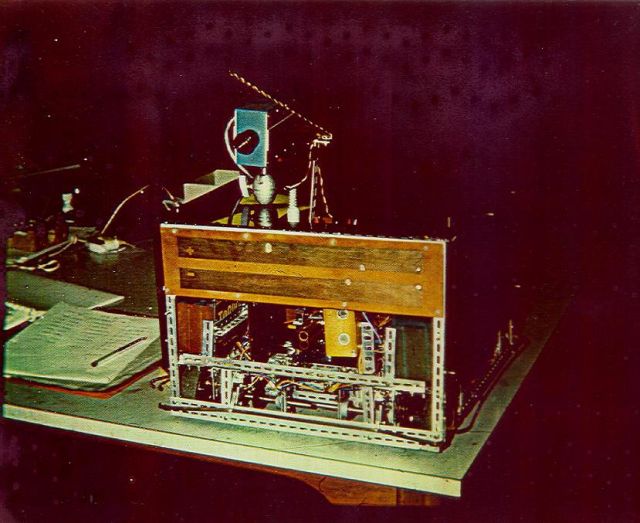
The QMW Mk. IV Mobile Research Robot
The final version (Mk. 4) of our first attempts at a mobile robot for machine learning research. It had a somewhat unusual (and not entirely satisfactory) drive layout with wheels at the front of the vehicle. D.C. motor drive was complemented with gray-code shaft encoders. Forward facing sensors included sonar rangefinder, colour photo-receptors and a 32×32 binary camera. Other sensors were all round touch bars and battery level monitoring. The contacts at the top of the front face allowed the vehicle to nestle against a charger pad. This robot had no on-board computing(!), relying on communications via an umbilical wire to a DEC PDP-11. The machine was programmed to give a plausible emulation of the Pavlovian conditioned reflex; and was used extensively by D.H. Mott in his thesis "Sensory-motor Learning in a Mobile Robot", an investigation into Piagetian forms of learning. Despite its simplicity this robot made several television appearances and enjoyed considerable press coverage.
Text and image from here.
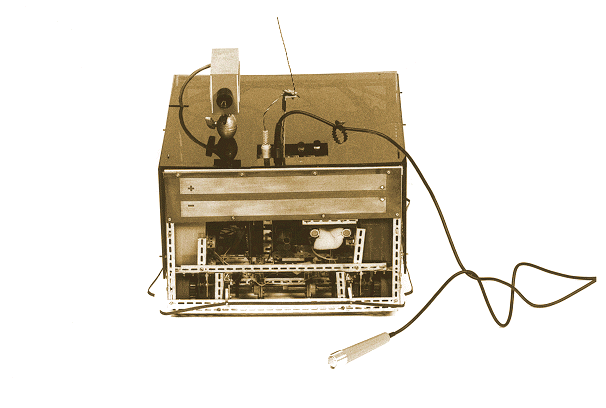

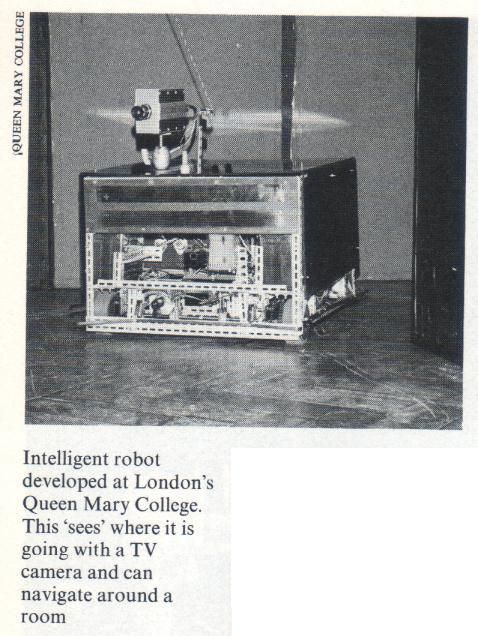
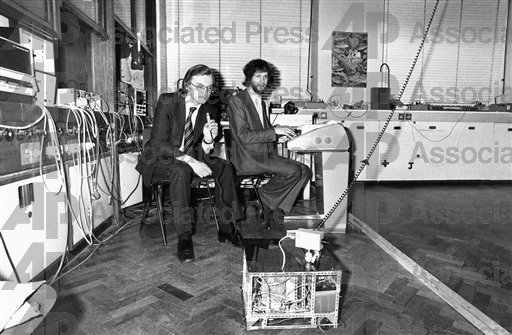
Computer scientists Mark Witkowski, left, and Dave Mott at the Artificial Intelligence Laboratory of Queen Mary College in London's Mile End Road, with a prototype (foreground) of the robot on which the CMC group are working which will be capable of learning for itself and making its own decisions. (AP Photo/Press Association) – image dated 23 February 1978.

photo caption: THINK PIECE—Mr Mark Witkowski and members of the team with Mr Cube, the thinking robot at Queen Mary College. [RH 2012 – In the background to the left of the camera you can see two bowed strips on the wall. These are the contacts used for the battery recharging.]
Evening Standard Tuesday February 21 1978 p7.
'Mr Cube'- the robot that thinks …
Meet the new Mr Cube. He's shy and retiring and has only one eye. But he has one big asset–he's a robot which thinks.
The robot is the brainchild of computer scientists Mark Witkowski and David Mott of the Artificial Intelligence Labarotary at Queen Mary College, University of London.
It has a very primative intelligence which enabled it to avoid obstacles, but larger and stronger version which will work in hazardous environments or intolerable places such as mines or nuclear power stations are planned.
Nest
The 20-inch high plastic box, on wheels, bristling with sensors and flasing lights, trundles forward when activated and then returns to its "nest"– a battery charger which gives an electrical award.
Labarotary director Mr Alan Bond said: "Robots as we know them are not capable of dealing with unexpected emergencies.
"We are developing a robot which will be responsive to its environment and will learn from its own experience."
Sullen
When I first introduced myself to "Mr Cube" he remained sullen, silent and motionless.
"Speak a bit louder," said scientist David Mott.
I did and the robot emittted a mechanical squeak and backed away. "He tends to do that if you shout," said David.
He will also back away if you knock into him, responding to his battery-powered sensors.
He is due to make a public demonstration later this week and although he can at the moment "speak" only with morse code signals, with barking, the scientists the scientists plan a more sophicticated character.
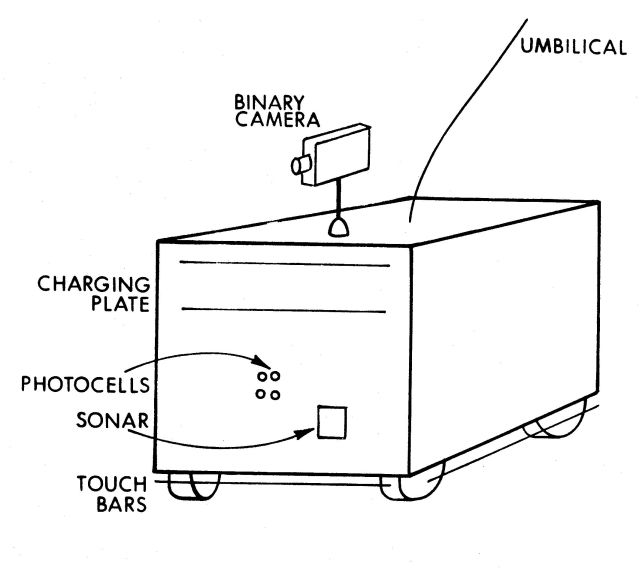
See pdf here.